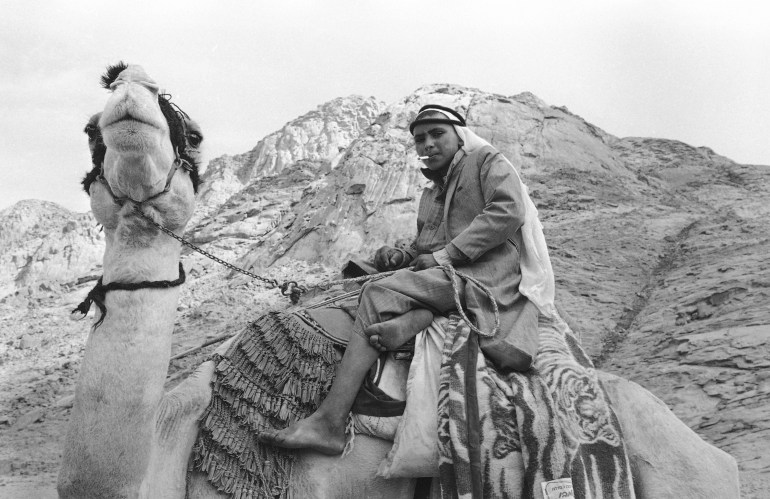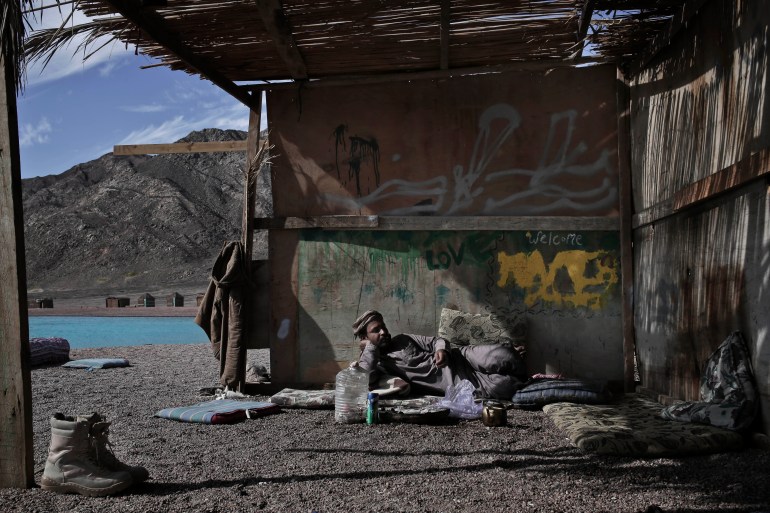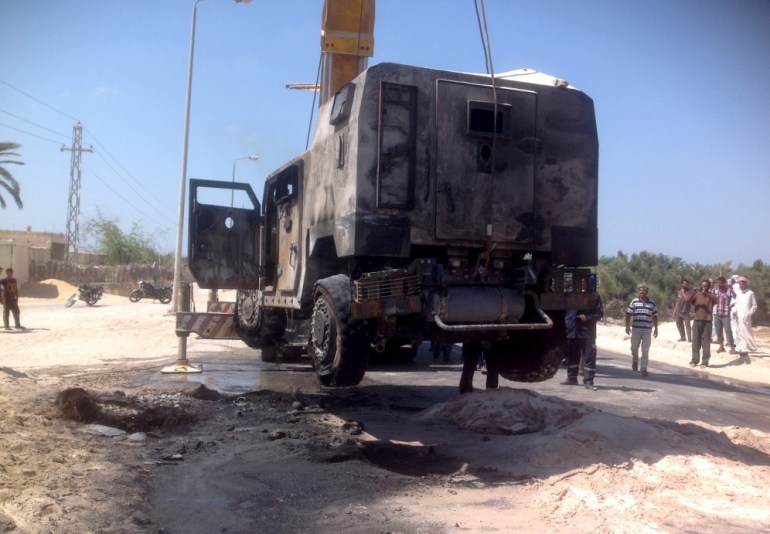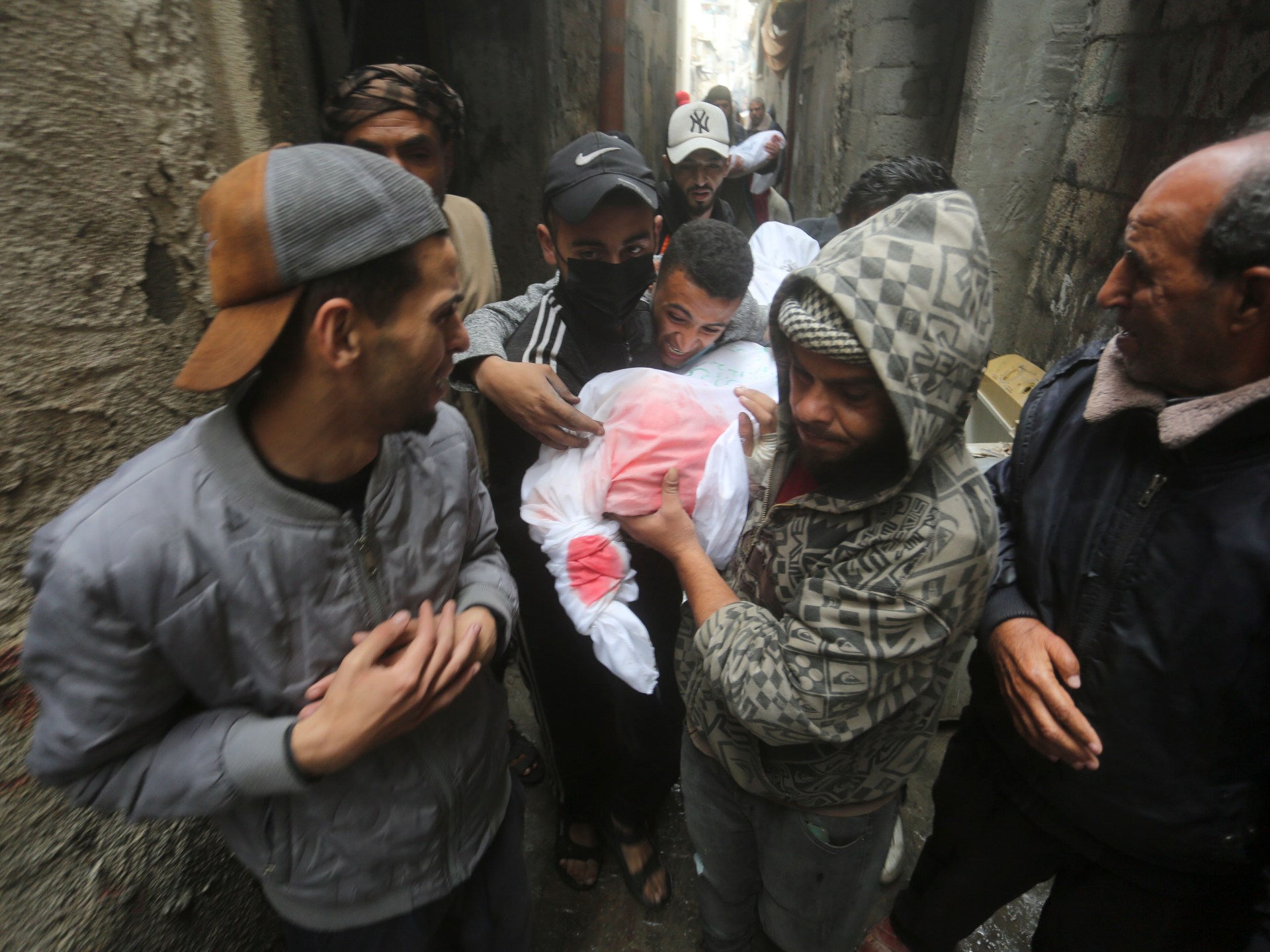
As Israel’s war on Gaza nears the end of a second month, Rehab Eldalil worries about reports about it Israel’s efforts to push the 2.3 million people of the besieged Gaza Strip to Egypt’s Sinai Peninsula – their ancestral homeland.
President Abdel Fattah el-Sisi has publicly stated this Egypt will not allow expulsion the Palestinians, as it would mean “the end of the Palestinian cause” and a potential threat to Egypt’s national security. However, news reports suggest that Israel could offer to pay off some of Egypt’s huge national debt in exchange for allowing the forced relocation of people from Gaza to Sinai.
Eldalil, an Egyptian photographer and storyteller of Bedouin descent, fears that this type of narrative “takes away the Palestinians’ right to remain on their land, while promoting that Sinai is an empty desert where Palestinians can go.”
It isn’t, and hasn’t been for centuries.
The 61,000-square-kilometer land triangle connecting Africa and Asia is a popular tourist destination, a significant religious and historical site, and an important economic center for Egypt. It is home to several oil and natural gas fields as well as the Suez Canal, one of the world’s busiest shipping routes, generating up to $9 billion annually.
The peninsula, whose northern two-thirds are occupied by the Sinai Desert and whose mountainous south boasts St. Catherine, Egypt’s highest peak, was also long home to countless Bedouin tribes who lived according to their traditions for centuries and eventually settled in cities .
These communities were often neglected by authorities and were collateral damage in national or regional geopolitical conflicts. Now the war in Gaza is causing fear among the Bedouins.
The first natives of Sinai
Before colonial powers drew borders to create the region’s current countries, the Arabian Peninsula, the Levant, and North Africa were connected by trade routes that provided the region with a common language. The carriers of this phenomenon were the Arab Bedouin tribes.
Finally, Eldalil says, “These communities…ceased to be nomadic, they became the first natives to settle in this desert over 1,000 years ago,” which she heard from the elders of her tribe, the Jabaliya (Mountain People).
“At the beginning they divided the peninsula into seven large tribes,” she says, which experts say have now evolved into a total of 33.
Eldalil, who has several visual projects about Bedouin identity and heritage, says the legacy of these original tribes is still alive.
“Embroidery is a great tradition that the community still practices, as well as traditional Bedouin poetry where they can tell their stories,” she says.

And there is Bedouin law. “If there’s a problem … they would sit down between the feuding families and resolve it in a more civilized way, like you would see in many advanced countries,” she says.
“They have their own rules and unspoken laws, which over time has led to many problems between them and the government, just like any other indigenous community in the world,” Eldalil adds.
Her deep ties to the country have increased tensions with the authorities, she says. “They are able to wander in the desert for days and weeks, they know every inch of sand and every corner of the mountains. They know their country so well that it can be intimidating and the need to control them arises.”
Dealing with Israel
Scientist Hilary Gilbert says Bedouins have an “environmental identity,” based on her decades of research into Bedouin life.
“They see themselves as an integral part of the natural world and therefore see themselves very much as its guardians,” added the University of Nottingham Research Fellow in Anthropology and Development.
Many of these “guardians of the natural world” refused to leave their land when Israel invaded the Sinai Peninsula in 1967, an occupation that lasted 15 years and led to deep distrust of them among many non-Sinai Egyptians, Gilbert said . “A widespread belief was that Bedouins collaborated with the Israelis, a deep-rooted prejudice against them because they were different, uncultured and untrustworthy,” she added.
“When Israel withdrew and the Egyptians took over the government again, they adopted a kind of policy of benign neglect of the Bedouins.”
For years, Bedouins had difficulty exercising their rights as citizens. National identity cards and papers were hard to come by, schools, hospitals and public services were scarce and joining the army was forbidden.
When Sinai was “discovered” in the late 1980s as a region that could turn Egypt into a tourism revenue stream, the Bedouins living there did not benefit – in fact, according to Eldalil, they were displaced and disadvantaged.
During the 2011 Arab Spring, the Rafah border crossing between Egypt and Gaza became a transit route for armed fighters and weapons, exposing the Sinai Bedouins to increased surveillance by the Egyptian state. Around the same time, the rise of armed groups such as the IS-affiliated group Ansar Bayt al-Maqdis heightened the Egyptian government’s security concerns in Sinai.
When current President Abdel Fatah el-Sisi took power in 2013, he launched a campaign against armed groups in Sinai. This included the creation in 2014 of a 79 kilometer long buffer zone in North Sinai along the border with the Gaza Strip.
According to a report by Human Rights Watch, between 2013 and 2015, its forces demolished more than 3,255 residential, commercial and administrative buildings and forcibly displaced thousands of people.

“My father’s home became a kind of desert,” says Eldalil, whose father used to live in North Sinai. “All the houses next to him are deserted because of the counterterrorism campaign.”
Those forced to leave by the army scattered to a number of Egyptian cities, including al-Arish, Ismailia and Sharqiya west of the Suez Canal. They were promised their eviction would be short-lived, pending the “elimination of terrorism,” local sources told Al Jazeera.
However, these communities are still displaced, although since 2018 the Egyptian government has changed its approach towards the Bedouins by allying with various tribes to cooperate on intelligence and security in Sinai.
In August, some of these Bedouins staged a 48-hour sit-in in the southern area of Sheikh Zuweid, demanding the right to return to their land. After authorities promised that repatriations would begin on October 20, the sit-in was dispersed.
With increasing security concerns surrounding the Rafah border crossing since hostilities began in Gaza on October 7, local Egyptian authorities appear to have changed their minds.
“The moment came and it was not time to go back,” a member of these Bedouin communities told Al Jazeera.
“In October, dozens of people from the Sawarka and Rumailat tribes gathered again […] “But members of the armed forces broke up the gathering and arrested a number of young people.”

Some organizations working with refugees also began hosting Bedouins in cities such as Cairo and Alexandria.
“Protect your country”
“The government could easily work with communities and learn more about the land, the landscape and how it is managed,” says Eldalil. “After all, protecting their land is one of Indigenous peoples’ greatest sources of pride.”
This is an opinion of Palestinians already living in Sinai.
Mohammed* is one of the thousands of Palestinians born and raised in Sinai following the mass expulsion of Palestinians during the creation of Israel in 1948, or the Nakba, Arabic for catastrophe.
“Palestinians in North Sinai make up more than a third of the population, and while some of us still cannot obtain Egyptian citizenship due to strict laws, we are treated like Egyptians,” says Mohammed. “We and Bedouins are the same people, have the same blood.”
He says Bedouins in Sinai helped Palestinians stuck in the desert at the start of the current war and have volunteered to provide aid to injured Palestinians coming from Gaza since the Rafah crossing was partially opened in early November.
As fears grow that a forced exodus of people from Gaza to Sinai could in turn displace local communities, Eldalil hopes the government will continue to foster relations between Cairo and Sinai’s Bedouins.
“There are actually people living in Sinai: the Bedouin communities,” she says, “who, like the Palestinians, have the right to remain on their land.”
*Name has been changed at the person’s request to protect their identity.





Recent Comments